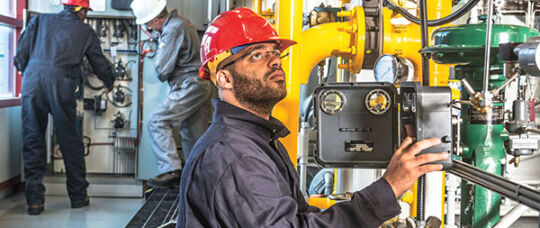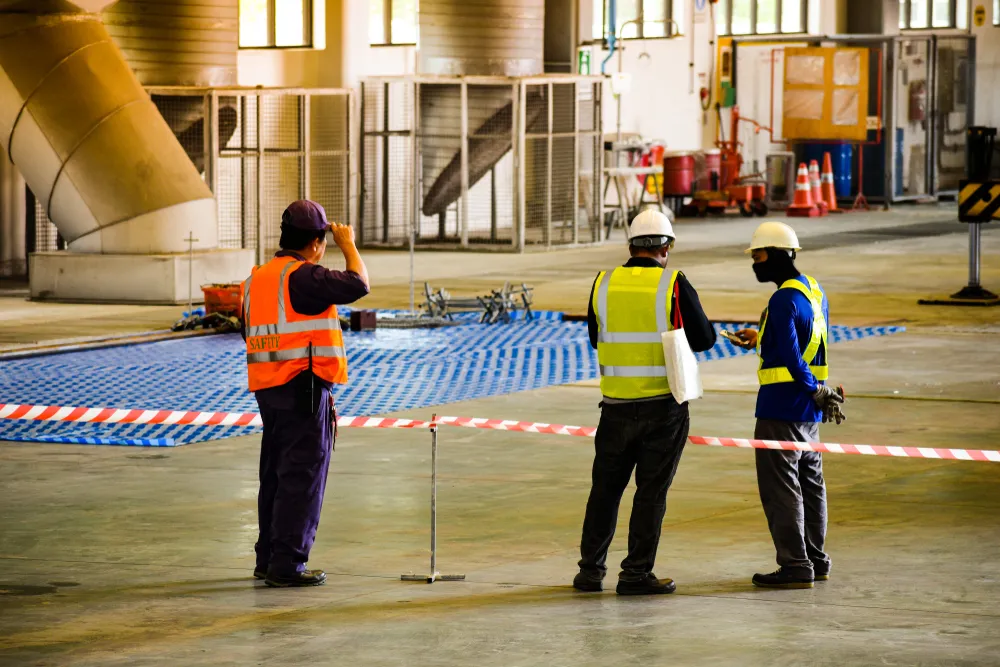The 7-Minute Rule for Roar Solutions
The 7-Minute Rule for Roar Solutions
Blog Article
The Greatest Guide To Roar Solutions
Table of ContentsMore About Roar SolutionsHow Roar Solutions can Save You Time, Stress, and Money.The 9-Second Trick For Roar Solutions
In such an ambience a fire or surge is possible when three basic conditions are fulfilled. This is commonly described as the "dangerous area" or "combustion" triangular. In order to shield installments from a possible explosion a method of evaluating and classifying a possibly unsafe location is needed. The function of this is to ensure the correct option and installment of tools to ultimately protect against an explosion and to ensure safety and security of life.
(https://www.anobii.com/en/01749dcc41232b575a/profile/activity)
No equipment should be mounted where the surface area temperature level of the devices is higher than the ignition temperature of the offered threat. Below are some common dust unsafe and their minimum ignition temperature level. Coal Dust 380C 225C Polythene 420C (thaws) Methyl Cellulose 420C 320C Starch 460C 435C Flour 490C 340C Sugar 490C 460C Grain Dirt 510C 300C Phenolic Resin 530C > 450C Aluminium 590C > 450C PVC 700C > 450C Residue 810C 570C The probability of the threat being present in a concentration high sufficient to create an ignition will differ from area to place.
Unsafe area electrical devices perhaps designed for use in greater ambient temperature levels. Area Fixing By Authorised Worker: Difficult screening might not be required nevertheless certain treatments might require to be followed in order for the tools to keep its third celebration score. Each item of equipment with an unsafe score must be evaluated separately.
Roar Solutions for Dummies
The devices register is a comprehensive data source of tools records that includes a minimum set of fields to recognize each product's location, technological parameters, Ex lover classification, age, and ecological information. This info is critical for tracking and handling the equipment successfully within dangerous areas. In comparison, for regular or RBI tasting evaluations, the grade will be a mix of Comprehensive and Close examinations. The proportion of Detailed to Shut examinations will certainly be figured out by the Tools Risk, which is assessed based upon ignition risk (the probability of a resource of ignition versus the probability of a combustible ambience )and the hazardous area classification
( Area 0, 1, or 2). This variant will certainly likewise affect the resourcing requirements for work prep work. As soon as Great deals are specified, you can develop sampling plans based upon the sample dimension of each Whole lot, which describes the variety of random equipment things to be examined. To figure out the called for sample size, 2 aspects need to be assessed: the dimension of the Great deal and the category of inspection, which suggests the degree of initiative that must be used( over at this website lowered, regular, or boosted )to the assessment of the Lot. By integrating the category of examination with the Great deal dimension, you can then establish the proper denial criteria for an example, implying the allowable number of defective things located within that example. For more details on this procedure, please describe the Power Institute Guidelines. The IEC 60079 basic advises that the maximum period between assessments should not exceed 3 years. EEHA evaluations will additionally be conducted beyond RBI campaigns as part of set up maintenance and equipment overhauls or repairs. These examinations can be attributed towards the RBI sample dimensions within the affected Great deals. EEHA assessments are carried out to determine mistakes in electrical tools. A weighted scoring system is necessary, as a single item of devices might have several mistakes, each with varying levels of ignition threat. If the combined rating of both assessments is less than two times the fault score, the Great deal is regarded acceptable. If the Whole lot is still considered unacceptable, it has to undergo a complete examination or validation, which may activate stricter inspection methods. Accepted Lot: The sources of any type of faults are recognized. If a common failing setting is discovered, extra devices may call for maintenance. Mistakes are categorized by intensity( Safety, Stability, Home cleaning ), ensuring that immediate problems are examined and attended to quickly to mitigate any type of influence on security or procedures. The EEHA data source should track and tape-record the lifecycle of faults in addition to the rehabilitative activities taken. Carrying out a durable Risk-Based Evaluation( RBI )strategy is important for making certain conformity and security in managing Electrical Equipment in Hazardous Areas( EEHA) (hazardous area electrical course). Automated Fault Rating and Lifecycle Administration: Easily take care of faults and track their lifecycle to boost assessment accuracy. The intro of this assistance for risk-based inspection further strengthens Inspectivity's position as a best-in-class remedy for regulatory conformity, as well as for any type of asset-centric evaluation usage situation. If you want discovering extra, we invite you to ask for a demonstration and discover how our solution can change your EEHA administration procedures.
The 4-Minute Rule for Roar Solutions

In regards to explosive danger, an unsafe area is an environment in which an explosive environment exists (or might be expected to be existing) in amounts that need unique precautions for the construction, installment and use tools. electrical refresher course. In this article we explore the difficulties encountered in the work environment, the risk control steps, and the needed expertises to work safely
These compounds can, in certain problems, develop eruptive environments and these can have major and tragic effects. Most of us are familiar with the fire triangular get rid of any one of the 3 elements and the fire can not take place, but what does this mean in the context of hazardous locations?
In most circumstances, we can do little about the levels of oxygen in the air, however we can have substantial influence on sources of ignition, for instance electrical tools. Dangerous locations are documented on the unsafe area category drawing and are recognized on-site by the triangular "EX" indication. Right here, amongst other vital information, areas are divided right into 3 kinds depending upon the threat, the probability and period that an eruptive environment will certainly exist; Zone 0 or 20 is considered the most unsafe and Zone 2 or 22 is deemed the least.
Report this page